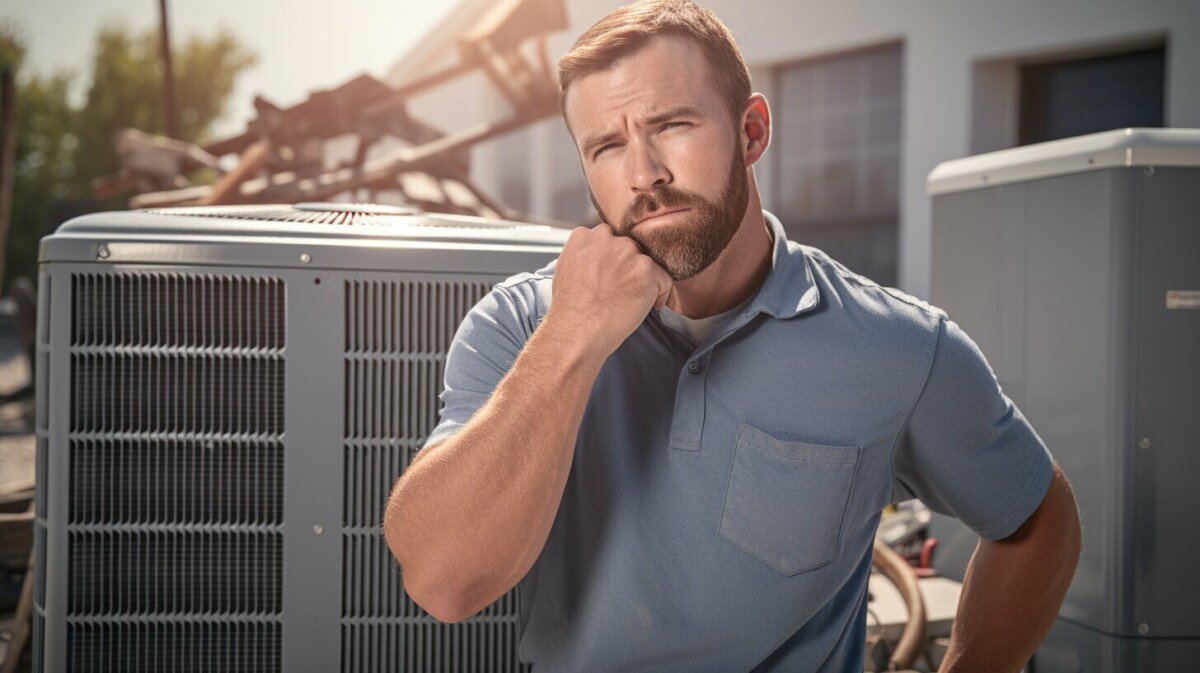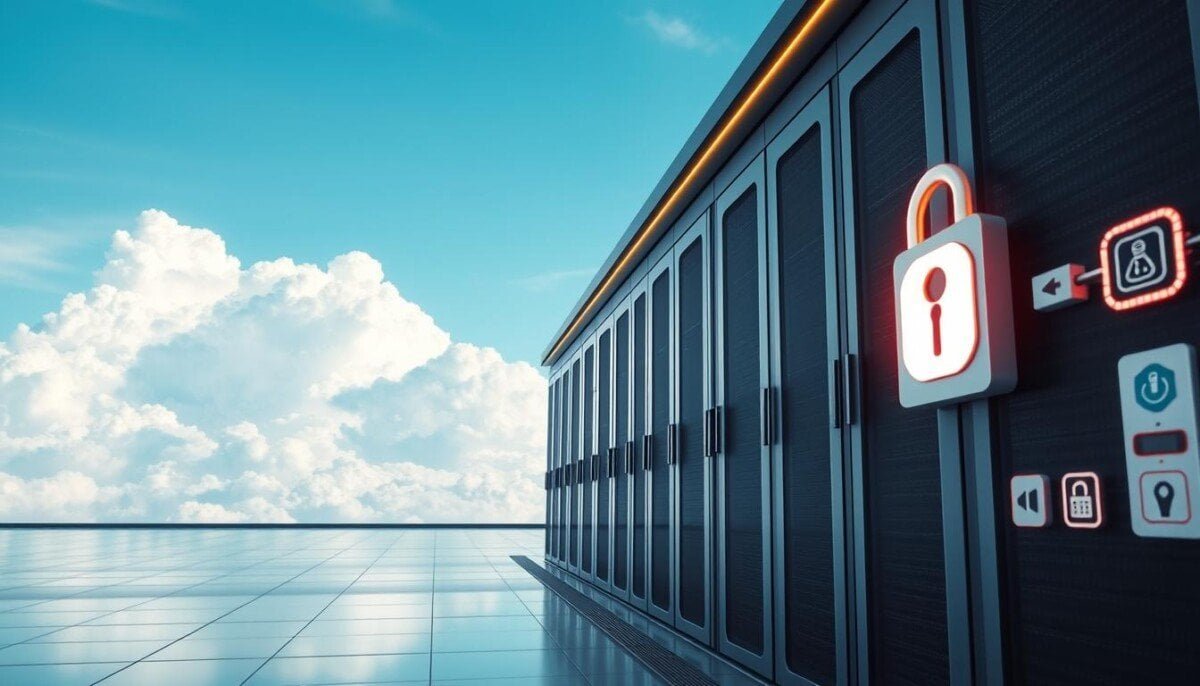If you’re facing issues with your air conditioning system, don’t sweat it. Our comprehensive guide will provide you with expert tips and solutions to troubleshoot common AC problems and HVAC issues. Whether you need AC maintenance tips or want to fix a malfunctioning AC, we’ve got your back.
In this guide, we will first explain the basic components of your AC system to help you understand how it works. Then, we will discuss the most common AC problems homeowners face and provide solutions for each issue. You’ll also find a comprehensive AC maintenance checklist and tips on how to keep your system working efficiently throughout the year.
Understanding Your AC System
Before diving into troubleshooting AC problems, it’s important to have a basic understanding of how your AC system works. Your AC system consists of several components that work together to provide cool air to your home. The main components of your AC system include:
| Component | Function |
|---|---|
| Thermostat | Controls the temperature of your home and communicates with the rest of the system to turn it on or off. |
| Evaporator Coil | Receives liquid refrigerant and turns it into cold air that is pushed through your home’s ducts. |
| Condenser Coil | Releases the heat that has been removed from your home’s air outside. |
| Compressor | Circulates refrigerant between the evaporator and condenser coils to remove heat from the air inside your home. |
| Air Handler | Directs the conditioned air into your home and circulates it through your ductwork. |
These components work together to cool your home and regulate temperature. Understanding the role of each component is important when troubleshooting AC problems, as it can help you identify which part of the system is malfunctioning.
Common AC Problems and Solutions
Even with regular maintenance, AC systems can experience problems. Here are some of the most common issues and their solutions:
| Problem | Solution |
|---|---|
| Dirty Air Filter | Replace the filter every 1-3 months. A dirty filter restricts airflow and reduces the system’s efficiency. |
| Refrigerant Leak | Call a professional to repair the leak and recharge the refrigerant. A low refrigerant level can cause poor cooling and damage the compressor. |
| Thermostat Malfunction | Check the wiring connections and replace the batteries. A faulty thermostat can cause the AC to turn on and off frequently or fail to start. |
| Frozen Evaporator Coil | Turn off the AC and allow the coil to thaw. A dirty air filter or low refrigerant level can cause the coil to freeze, obstructing airflow and reducing efficiency. |
If you encounter any of these issues, follow the recommended solutions before attempting any further troubleshooting. In some cases, it may be necessary to call in a professional for repairs.
Next up, we’ll discuss AC maintenance tips to prevent these problems from occurring in the first place.
AC Maintenance Tips
Regular maintenance is essential to keep your AC system working efficiently and prevent common AC problems. Here is a comprehensive AC maintenance checklist:
| Task | Frequency |
|---|---|
| Clean or replace air filter | Every 1-3 months |
| Clean evaporator coils | Annually |
| Clean condenser coils | Annually |
| Clean condensate drain and line | Every 6 months |
| Check refrigerant levels and top off if necessary | Annually |
| Inspect ductwork for leaks or damage | Annually |
| Calibrate thermostat | Annually |
In addition to following the maintenance checklist, here are a few tips to maintain your AC system:
- Trim any foliage around the outdoor unit to ensure proper airflow.
- Avoid closing vents or blocking them with furniture or other items.
- Invest in a programmable thermostat to efficiently manage your AC system.
By following these maintenance tips and checklist, you can extend the lifespan of your AC system and prevent common AC problems.
Troubleshooting Air Conditioning Issues
If your AC system isn’t functioning properly, it’s important to troubleshoot the problem to determine the root cause. Here are some steps to follow when troubleshooting air conditioning issues:
- Check the thermostat: Ensure that the thermostat is set to the desired temperature and that it’s functioning properly. Try replacing the batteries and ensuring that the wiring is connected correctly.
- Check the air filter: A clogged air filter can cause your AC system to work inefficiently or stop working altogether. Check the filter and replace it if necessary.
- Inspect the air ducts: Ensure that the air ducts are clean and free of any obstructions that could be preventing air from flowing properly. Check for any leaks or damage as well.
- Inspect the outdoor unit: Ensure that the outdoor unit is clean and free of any debris. Check the wiring and connections to ensure they are secure.
If you’ve followed these steps and your AC system still isn’t functioning properly, it may be time to call in a professional. They can help identify and repair any issues that are preventing your AC system from operating as it should.
AC Troubleshooting Steps
Once you’ve identified the issue with your AC system, it’s important to take the necessary steps to troubleshoot the problem. Here’s a step-by-step guide on what to do:
- Check the thermostat: Ensure the thermostat is set to the correct temperature and the cooling mode is selected. If the thermostat is not working, replace the batteries and check the wiring connections.
- Clean the air filter: A clogged air filter can cause airflow issues and make your AC system work harder than it needs to. Clean or replace the air filter as needed.
- Inspect the outdoor unit: Check the outdoor unit for any debris, obstructions, or damage to the condenser or evaporator coils. Clear away any debris and straighten any bent fins with a fin comb.
- Check the refrigerant levels: Low refrigerant levels can cause your AC system to blow warm air. Check the refrigerant levels and add more if necessary.
- Inspect the ductwork: Check the ductwork for any leaks, gaps, or blockages that could be affecting your AC system’s efficiency.
- Consider calling a professional: If you’ve tried these troubleshooting steps and your AC system is still not working, it’s time to call in a professional. A licensed HVAC technician can diagnose and repair more complex issues.
By following these troubleshooting steps, you can identify and solve common AC problems and keep your system running efficiently. Regular maintenance and prompt repairs can also help extend the lifespan of your AC system and save you money in the long run.
AC Repair Guide
If you’re experiencing issues with your AC system, it’s important to know how to troubleshoot and fix common problems. While some issues may require the assistance of a professional, there are a few things you can try on your own before making the call.
DIY AC Repair
One of the most common AC problems is a clogged air filter. If your air conditioning system is not producing enough cool air or seems to be working harder than usual, check the air filter. If it’s dirty or clogged, clean or replace the filter to improve airflow and system performance.
If your AC system is not turning on at all, check the thermostat. Make sure it’s set to the appropriate temperature and that the batteries are functioning properly. You may also want to check the circuit breaker to ensure that it hasn’t tripped.
In some cases, a malfunctioning fan motor may be the culprit. If you hear a humming sound coming from the unit but the fan isn’t turning, it may be time to replace the fan motor. This is a more complex repair and may require the assistance of a professional.
When to Call a Professional
While some AC problems can be fixed with DIY methods, others may require the assistance of a professional HVAC technician. If you’re unsure of what’s causing the problem or have already tried DIY methods without success, it’s time to call in the experts. They have the knowledge and tools to diagnose and repair any issue with your AC system.
Additionally, if your AC system is under warranty, attempting DIY repairs may void the warranty. Be sure to check the terms of your warranty before attempting any repairs on your own.
Remember, regular AC maintenance is essential to prevent common problems and keep your system running efficiently. Be sure to follow our AC maintenance tips and schedule professional maintenance at least once a year to ensure your system is in top shape.
HVAC Troubleshooting
While we’ve focused mostly on AC systems in this guide, it’s important to have a basic understanding of HVAC troubleshooting and common issues so that you can identify and resolve problems with your heating and cooling system. Here are some common HVAC issues and tips on how to troubleshoot them:
| HVAC Issue | Troubleshooting Tips |
|---|---|
| Airflow is weak | Check air filter for dirt buildup, inspect ductwork for leaks or restrictions |
| Heating system won’t turn on | Check thermostat settings, inspect ignition system and pilot light |
| Cooling system won’t turn on | Check thermostat settings, inspect electrical connections and circuit breaker |
| Uneven heating or cooling | Check ductwork for leaks or restrictions, inspect insulation in attic and walls |
If you’re experiencing issues with your HVAC system, it’s important to address them as soon as possible to prevent further damage and avoid higher energy bills. In some cases, you may be able to troubleshoot and resolve the issue on your own, but in other cases, it may be necessary to call in a professional HVAC technician.
How to Fix AC Problems
When your AC system isn’t working properly, it’s important to take action to fix the problem and get your home cool and comfortable again. Here are some steps you can take to troubleshoot and fix common AC problems:
Clogged Air Filter
If your AC system isn’t blowing cold air, the problem may be a clogged air filter. To fix this problem, you’ll need to replace your air filter. Start by turning off your AC system and locating the air filter. Remove the old filter and replace it with a new one, making sure it’s properly seated and secured.
Refrigerant Leaks
If your AC system isn’t cooling effectively, you may have a refrigerant leak. To fix this problem, you’ll need to call in a professional HVAC technician to locate and repair the leak. Attempting to fix a refrigerant leak on your own can be dangerous and may result in further damage to your AC system.
Frozen Evaporator Coils
If you notice ice buildup on your AC system, it may be a sign of frozen evaporator coils. To fix this problem, turn off your AC system and allow the ice to thaw completely. Once the ice has melted, check your air filter and make sure it’s clean and properly installed. If the problem persists, you may need to call in a professional for further assistance.
Malfunctioning Thermostat
If your AC system isn’t turning on or isn’t maintaining a consistent temperature, the problem may be a malfunctioning thermostat. To fix this problem, start by replacing the batteries in your thermostat. If that doesn’t work, check the wiring connections and make sure everything is properly connected. If the problem persists, you may need to replace your thermostat.
Remember, while some AC problems can be fixed on your own, it’s important to know when to call in a professional. Attempting to fix complex AC problems on your own can be dangerous and may result in further damage to your system. If you’re unsure about how to fix an AC problem, don’t hesitate to call in a professional HVAC technician for help.
Energy Savings Tips
Keeping your home cool during the summer months can be expensive, but there are ways to reduce your AC energy use and save money. Here are a few energy savings tips:
1. Use a Programmable Thermostat
A programmable thermostat allows you to set the temperature in your home based on your schedule. This means you can set your AC to turn off or reduce its output when you’re not home, reducing energy waste.
2. Keep Your Air Filters Clean
Dirty air filters reduce air flow, making your AC work harder to cool your home. Make sure to clean or replace your air filters regularly to keep your AC system running efficiently.
3. Use Ceiling Fans
Ceiling fans can help circulate cool air throughout your home, reducing the load on your AC system. Make sure to turn off your fans when you’re not in the room to save energy.
4. Close Your Curtains and Blinds
Keeping your curtains and blinds closed during the day can help block out the sun’s heat and keep your home cooler. This reduces the need to rely on your AC system to cool your home.
5. Schedule Regular AC Maintenance
Regular AC maintenance helps keep your system running efficiently, reducing energy waste. Make sure to schedule annual or bi-annual maintenance appointments with a professional to keep your AC system in top condition.
By following these energy savings tips, you can reduce your AC energy use and save money on your energy bills. Remember, small changes can make a big impact!
When to Replace Your AC System
While regular maintenance and repair can extend the lifespan of your AC system, there will come a time when it’s no longer worth the investment to keep repairing an old system. Here are some signs that it may be time to replace your AC system:
- Your AC system is more than 10 years old
- Your energy bills have been steadily increasing
- Your AC system is requiring frequent repairs
- Your home is not cooling evenly
- Your AC system is producing unusual smells or noises
If you’re experiencing any of these issues, it’s important to consult with a licensed HVAC technician to assess the condition of your AC system and determine the best course of action.
When considering a replacement, it’s important to understand the different types of AC systems available and their efficiency ratings. An HVAC technician can help you choose a system that is the right size and capacity for your home and budget.
Can the Tips for Troubleshooting AC Problems be Applied to Troubleshooting Car AC?
When it comes to troubleshooting AC problems, some expert tips for troubleshooting car ac can indeed be applied. Both systems rely on similar principles, such as refrigerant levels, electrical connections, and compressor functionality. However, it’s important to note that cars have their own unique complexities, so seeking professional help for car AC issues is often recommended.
Can I Apply the Same Troubleshooting Tips for Airpods to My AC?
When it comes to troubleshooting, the tips for airpods connectivity may not be directly applicable to your AC. The two devices have different mechanisms, so it’s best to consult the specific troubleshooting guidelines provided by the AC manufacturer. By following their recommendations, you can ensure effective problem-solving and optimal performance for your air conditioning system.
FAQ: Troubleshooting AC Problems
As a homeowner, it’s important to know how to troubleshoot common AC problems and perform regular maintenance to keep your system running efficiently. Here are some frequently asked questions related to troubleshooting AC problems:
What regular maintenance should I perform on my AC system?
Regular maintenance on your AC system includes changing the air filter every 1-3 months, cleaning the coils, checking refrigerant levels, and ensuring the thermostat is functioning properly. It’s also a good idea to schedule an annual inspection and tune-up with a professional HVAC technician.
What are some common AC problems?
Some common AC problems include a malfunctioning thermostat, low refrigerant levels, a clogged air filter, frozen evaporator coils, and electrical issues.
How can I troubleshoot my AC system if it’s not working?
If your AC system isn’t working, start by checking the thermostat settings, replacing the air filter, and checking the power supply. If these basic troubleshooting steps don’t solve the issue, it’s best to call in a professional HVAC technician.
Can I repair my AC system on my own?
Some minor AC problems can be repaired on your own, such as replacing a clogged air filter or resetting the thermostat. However, for more complex repairs and issues with electrical components, it’s best to call in a professional HVAC technician to avoid causing further damage or voiding any warranties.
What are some signs that my AC system needs to be replaced?
Signs that your AC system may need to be replaced include frequent breakdowns, rising energy bills, outdated equipment, and a system that is more than 10-15 years old. If you’re experiencing these issues, it’s best to consult with a professional HVAC technician to determine the best course of action.



